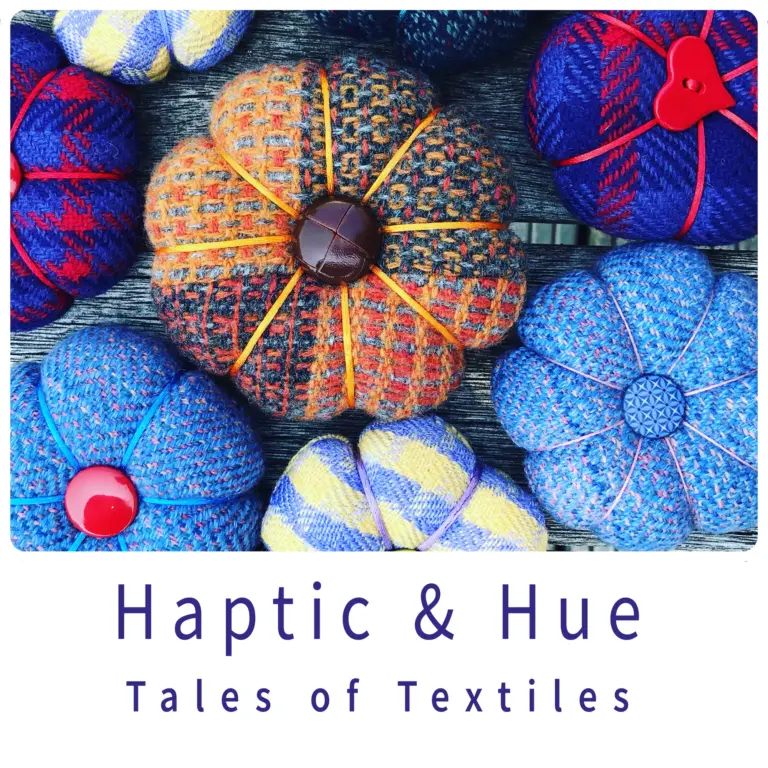
Who doesn’t love a good tartan? It is everywhere from high fashion catwalks to shooting parties on winter hillsides, from military uniforms on parade to much-loved old sofas. It is at home in the humblest of cottages and the most splendid of royal palaces. It has a kaleidoscope of different uses and meanings. It is one of the most recognised patterns on earth, a global textile, visible almost everywhere.
But tartan is much more than a pattern, it is a fabric of contradiction and surprise. It holds many meanings, often simultaneously. It can represent the establishment and the power of the state, and at the same time signify rebellion and treachery. It can be an emblem of enslavement and oppression, or it can represent comfort, family, and home. Its meanings are as diverse as its many patterns.
In this episode of Haptic & Hue’s Tales of Textiles, we look at where tartan comes from and how it acquired its many meanings and controversies, and why some people love it and others hate it. Tartan is a textile of duality, able to hold many ideas within its simple grid design. It has a history that has spread out across the world and taken a sense of what it means to be Scottish with it.
But there is more than history to tartan: we also hear from a bespoke kilt-maker, who designs and registers her own tartans. She creates modern tartans able to embrace new definitions of identity and community and expand far beyond the Highland glens they first sprung from.
All of this has been put into context by the first exhibition in living memory about Tartan in Scotland itself, which opened in April 2023 at the Victoria and Albert Museum in Dundee, which we went to see as part of making this episode.
For more information, a full transcript, and further links, https://hapticandhue.com/tales-of-textiles-series-5/